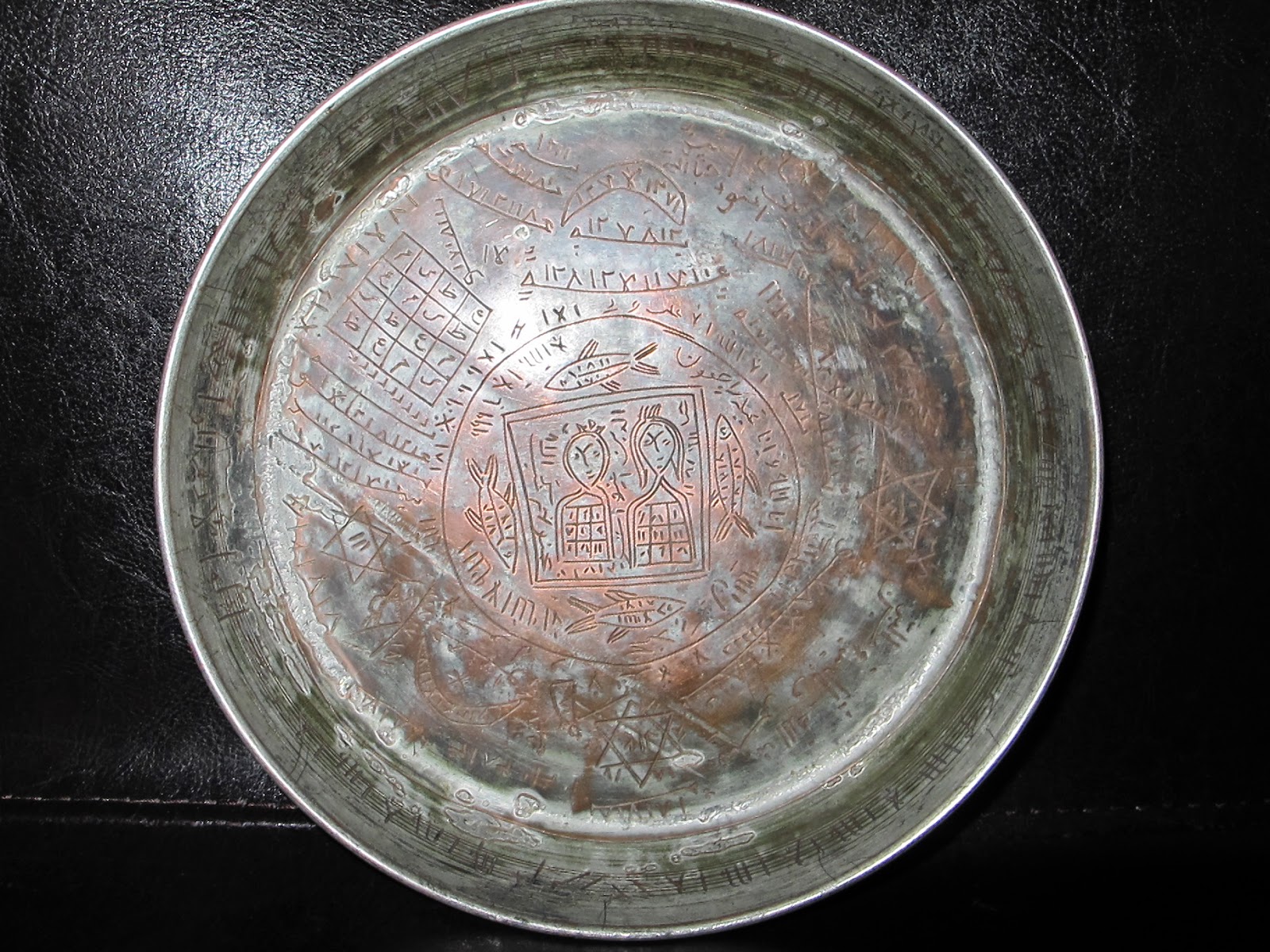Recently,
I had the opportunity to examine an Islamic magic bowl supposedly created for
love and prosperity. The bowl was made in Iran and likely can be dated to the
pre-Modern time-period. The object is comprised of a myriad of sigils, magic
squares, and partially inscribed Qur’anic verses. The purpose of my analysis
was to interpret the bowl’s intended functionality through an examination of
its aforementioned attributes as a means to contextualise it within the arena
of the current corpus of scholarship concerning magic-medicinal bowls. Within
this post, I will discuss one aspect of the magic bowl, the Seal of Solomon, which only
occurs three times within the illustrative programme of the bowl, but is
significant nonetheless.
In the general tradition of magic, the Seal of
Solomon along with the seals of various other prophets are commonly found on
amulets and talismans.[iii]
When the Seal of Solomon and the other prophetic seals are inscribed together,
they are believed to “represent the mysterious name and the seal of the
Almighty.”[iv]
However, the Seal of Solomon may stand-alone and is often illustrated as a star
in the shape of a pentagram or hexagram.[v]
Within geometric symbolism, the hexagram and pentagram represent a cosmic
expression of “heaven and its reflection
on earth, the divine and its reflection in creation and of the connection
between heaven and earth, between the macrocosm and the microcosm, and between
spirit and matter.”[vi]
This reference to divinity and creation is reminiscent of previous discussions
about the juxtaposition of the square and the circle, which Emily Tuttle has
touched upon within her work and contributions to Beyond Borders and is something I will further elaborate upon
within part II of this series.
However,
with this succinct inquiry into the seal’s possible relevance, the question
remains as to why this symbol was incorporated into the illustrative programme
of this particular magic bowl. One may postulate that a belief in the magical
abilities of Solomon along with knowledge of the seal’s geometric and symbolic
significance may have been an impetus for the creator of the magic bowl to
incorporate the Seal of Solomon within the magic bowl’s magical and textual
program in order to enhance the bowl’s potential efficacy. However, this, for
now, must be left for further analysis especially with regard to the seal’s juxtaposition
with other inscribed aspects of the magic bowl, which shall be discussed in part
II.
~Shandra
[i] Emilie Savage-Smith, Science Tools & Magic, 72.
[ii] Ibid, 72-105.
[iii] T.Canaan, “Arabic Magic
Bowls,” 94.
[iv] Ibid.
[v] Ibid; Gershom Scholem, “The Curious History of the Six-Pointed Star,” Scholem states that the
terms for the geometric shapes of the hexagram and pentagram were both endowed
with power, and were frequently interchanged within talismanic literature. Some
amulet makers used the hexagram while others used the pentagram. Both stars
were called the ‘Seal of Solomon’ and there was no difference between them,
245-246.
[vi] "King Solomon's Seal." Israel Ministry of Foreign
Affairs;
J.C. Cooper, 179-180.
[vii] T. Canaan, “Arabic Magic
Bowls,” 94.
[viii] G. Scholem, 245-246.
[ix] Paul A. Torijano,
“Solomon and Magic”, 110; C. Gruber, 140.
[x] G. Scholem, 246.
[xi] E.A. Wallis Budge, 33.




Four fishes surround the couple. Perhaps the bowl was constructed during an elected time when the Moon was in Pisces, in an Arabic lunar mansion that favors love and prosperity. Fascinating!
ReplyDeleteWould be interested to know which planet's magic squares are being used here.